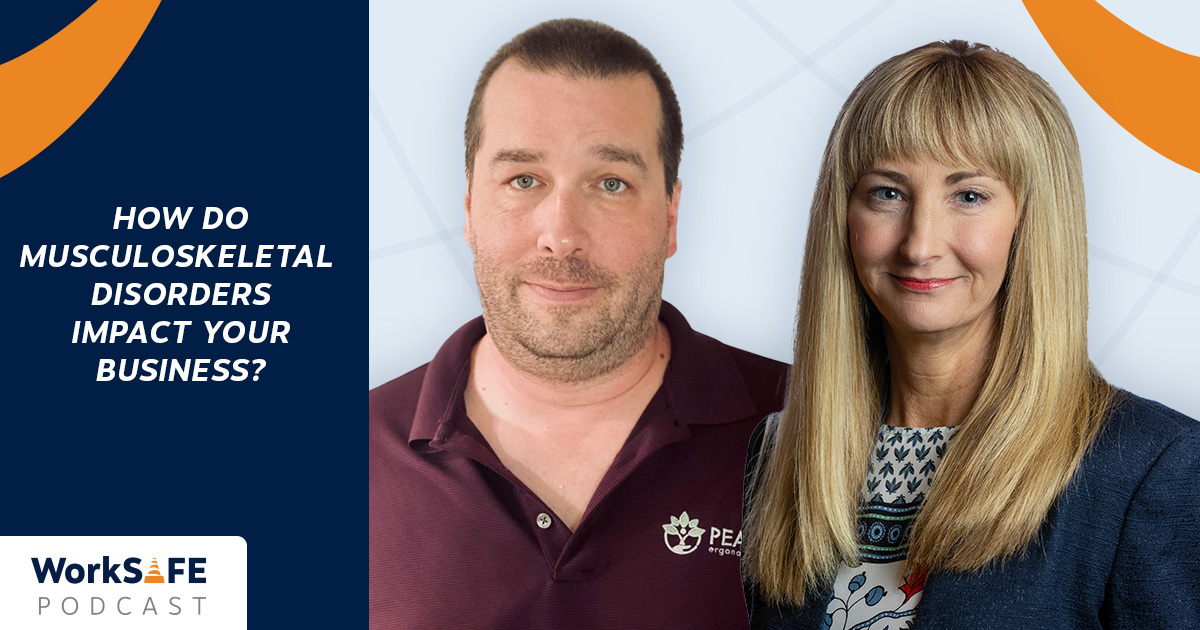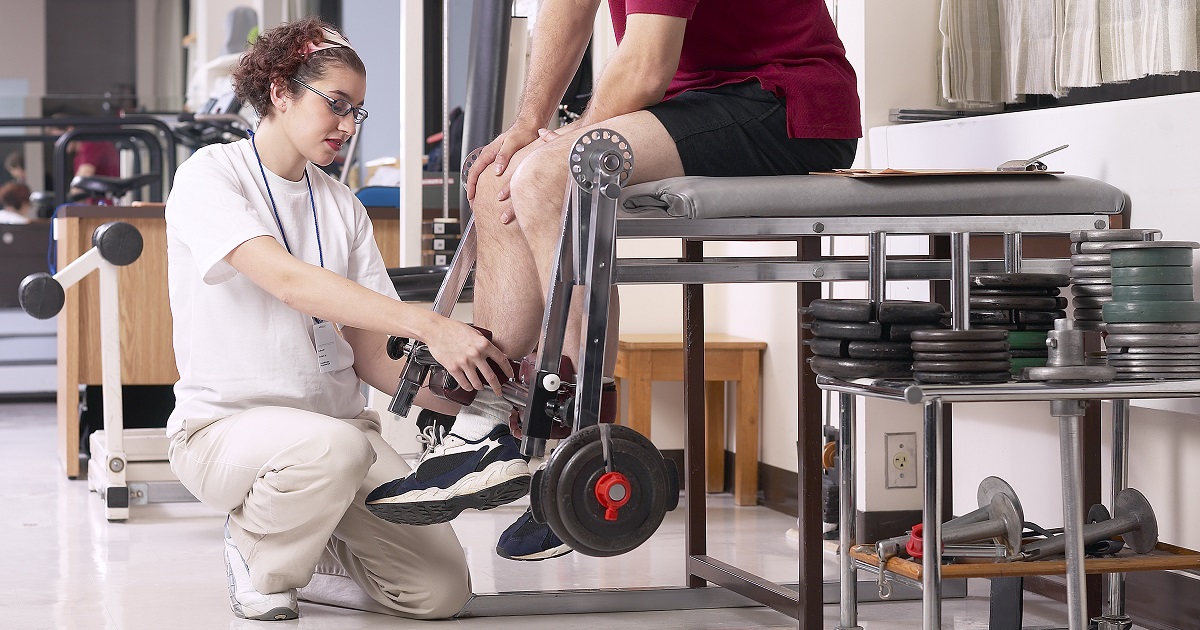For Media Inquiries
Contact Revee White, Director of Marketing and Communications at rwhite1@mem-ins.com or 573.499.4190.
Musculoskeletal disorders (MSDs) are one of the most common conditions affecting the working population. They are also a major cause of lost time on the job. These painful injuries don’t just affect physical health. They impact mental health, too.
On this episode of the WorkSAFE Podcast, we are joined by Paul Krewson. He is the founder and CEO of Peak Ergonomics. Krewson created the organization to problem-solve for businesses that want to improve overall system performance and decrease the risk of injury to their employees.
First, Krewson will walk listeners through what a musculoskeletal injury is. Then, he’ll share the five factors that contribute to them the most. Finally, we’ll discuss how employers can prevent them – and intervene in cases of early injury.
Listen to this episode of the WorkSAFE Podcast, or read the show notes below.
What is a musculoskeletal disorder?
A musculoskeletal disorder (MSD) affects certain areas of the body. This includes muscles, tendons, ligaments, cartilage, joints, nerves and spinal discs. The Occupational Safety and Health Administration (OSHA) divides MSDs into two categories: illness and injury. An injury happens when a worker can identify a time or date they started to have pain. For example, pulling a muscle while lifting a heavy box.
Illnesses are harder to pin down. “An illness is more insidious and onset,” Krewson explained. “You can’t really figure out when exactly it happened.” For many, it starts as simple soreness or a twinge of pain. Over time, the pain gets worse. This is often triggered by repetitive motion. Today, ergonomics professionals call this a slow progression cumulative trauma disorder, or musculoskeletal disorder illness.
A short history of ergonomic guidance
Twenty years ago, an ergonomic standard passed in the U.S. government. It labeled all cumulative trauma disorders as work-related. For instance, a common illness workers experience is Carpal Tunnel Syndrome. It causes pain in the hand and arm. Due to the standard, OSHA would have always considered it to be caused by a job. But in reality, this isn’t always the cause. And presuming that it was conflicted with work comp laws.
The ergonomic standard was considered controversial. As a result, it was rescinded shortly after. However, the discussion did result in a comprehensive report by the National Institute for Occupational Safety and Health (NIOSH). It incorporated important information from the original standard, and is still used today.
5 factors that contribute to musculoskeletal disorders
According to Krewson, there are five factors that contribute to musculoskeletal disorders. These actions or movements are done often in the workplace. Eventually, they can lead to injury and illness. Pain begins when employees do the following motions:
- Repetition. This is classified as frequency and speed over time. If you are doing something more than twice a minute, then it can be called repetitive.
- Force. This includes gripping, pinching, lifting, carrying, pushing and pulling.
- Posture. Awkward posture, or holding the same position for a long time, are MSD risk factors.
- Contact stress. Sudden impact, or sustained pressure, on certain parts of the body can create strain.
- Vibration. There are two types of vibration: whole body and segmental hand-arm. Whole body is caused by moving floors, or activities like driving a machine. Segmental hand-arm occurs often through power tools, like pneumatics guns or sanders.
Krewson finds that a single factor isn’t likely to cause injury. “Just one alone isn’t going to cause you to have a disorder,” he shared. “It’s usually a combination and from my experience, it’s usually three – when you get three of these risk factors together.” For example, posture, force and repetition are the greatest factors in shoulder injuries. However, posture, force and vibration contribute the most to back injuries.
The dangers of twisting
Although twisting isn’t one of the main five factors, the risk it poses is serious. “I’ll just tell you from personal experience that twisting is so harmful,” Krewson said. “The most common thing I’ve seen when somebody hurts their back – it’s twisting. It’s frustrating because it’s so preventable.” Twisting is rarely needed when working. With the right technique, it can be eliminated completely. Krewson recommends techniques, like moving hands and feet together, to help reduce long-term damage.
Muscle injury and illness take a mental toll
Musculoskeletal disorders are hard on the body. They cause pain, limit movement and take time to heal from. But they can also cause a major hit on an injured worker’s mental health. “I think we all understand the mind affects the body and the body affects the mind,” Krewson continued. “The medical term is comorbidity. Comorbidity is when you have more than one disorder working together.”
For example, a worker with a herniated disc is often in constant pain. That pain affects more than their ability to work. It makes it difficult to sleep and to participate in family activities. Krewson highlights how this leads to more serious consequences, such as depression and down the line, substance abuse.
Can mental illness cause musculoskeletal injuries?
In some cases, employees experiencing mental illness are at higher risk of injury. “People that are having difficult time with their mental health…it usually shows with their attendance and functionality,” Krewson explained. “You can look at their level of productivity.” They may be distracted, irritable and have a hard time getting their job done.” Stress, medication and weight gain can also cause old injuries to flare up.
Why ergonomics are worth the work
It’s important for employers to prevent MSDs where they can. Further, it’s critical to take action when an employee is showing early signs of illness. Peak Ergonomics coaches businesses using four concepts:
- Education. Teach employees the right way to work – including lifting, standing and using tools.
- Ergonomics. If a motion – or lack of it – creates an injury risk, change the way employees work.
- Exercise. Incorporate movement into the work day. Make space and time for breaks.
- Early intervention. Watch for employees who may be experiencing pain. Address it early.
Early intervention is key
“I’m an occupational therapist,” Krewson said. “And so many people, by the time they saw me, their problem had been going on for several months. Usually, however long this disorder has been going on, it takes about that long for you to recover, once we start doing the right thing and taking corrective action to fix your problem.”
“We’ve been very successful,” Krewson finished. His small team has seen thousands of early intervention cases. “Out of those 20,000 plus early intervention cases, our success has been over 96%. So if you catch stuff early, it’s really easy to fix.”
For free safety posters, sample policies, and safety toolkits, visit our Resource Library. Then, check out this episode to learn how ergonomics play a role in building great return to work programs.

